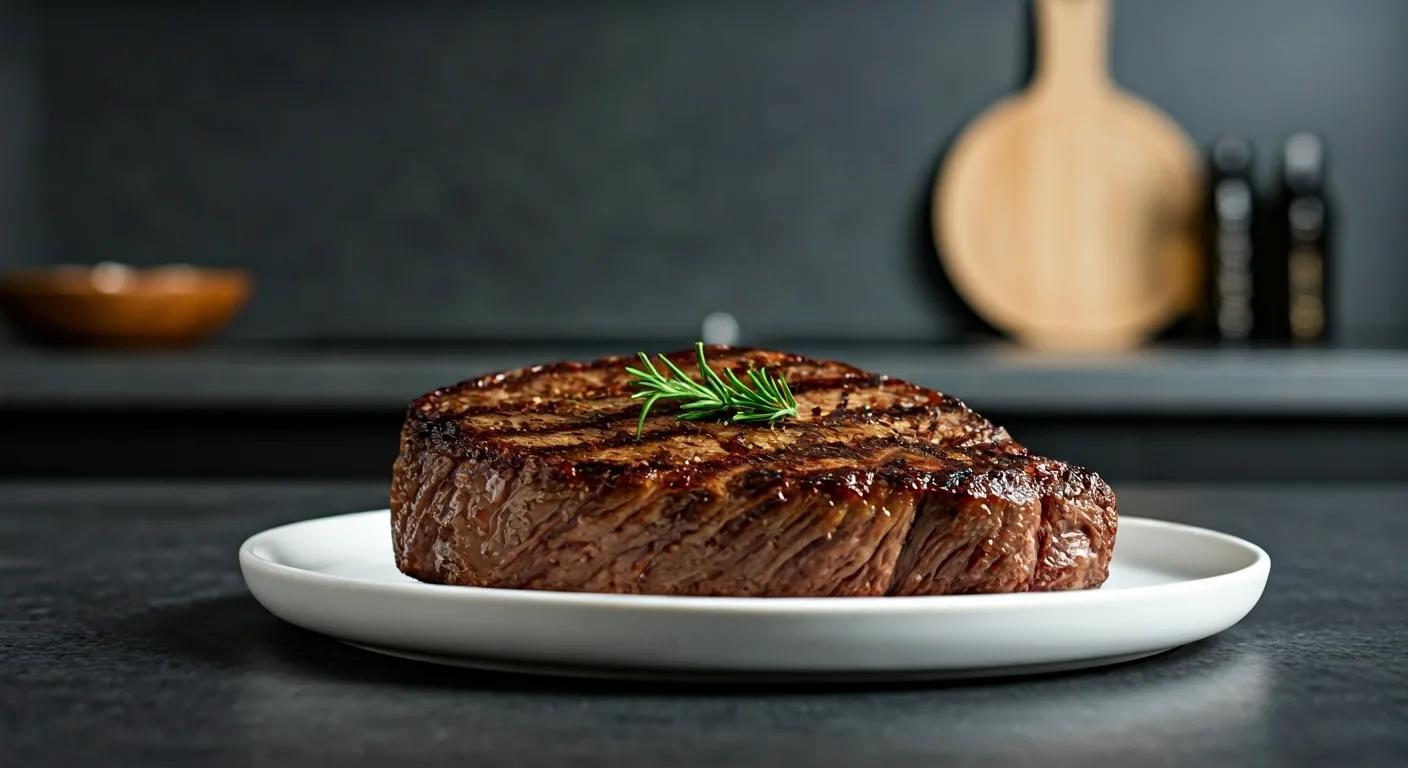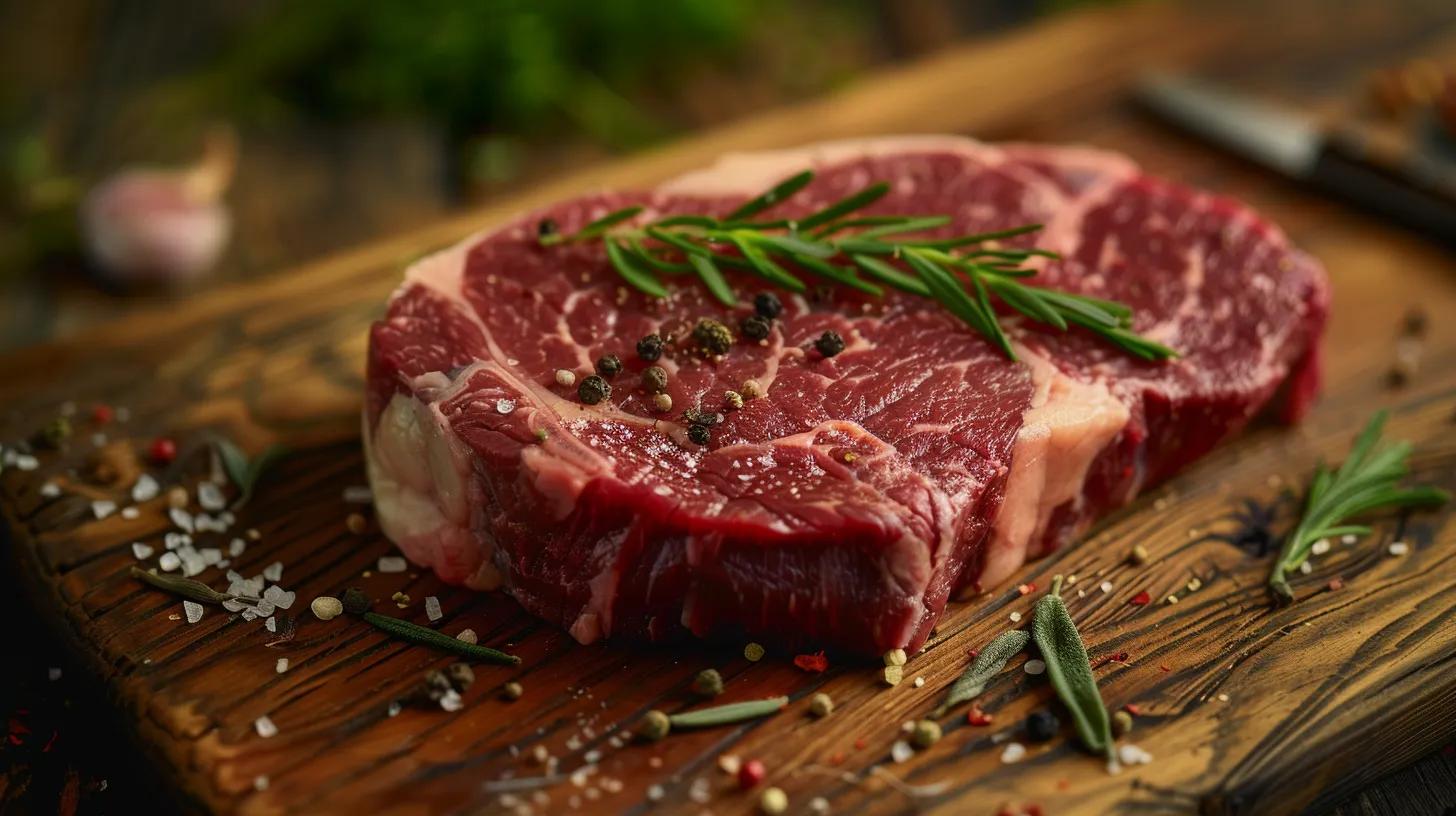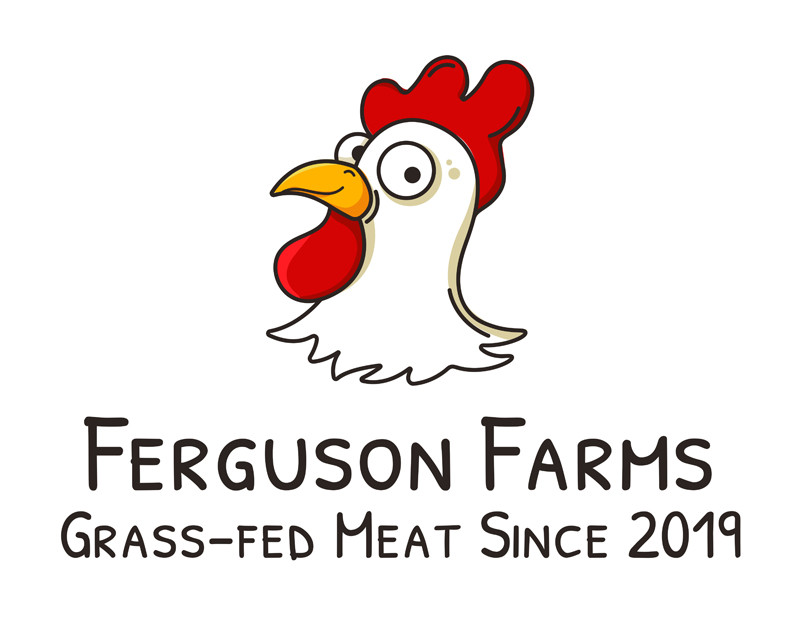Understanding the Grass-Fed Beef Nutritional Profile
posted on
July 21, 2025
Grass-fed beef offers more than just exceptional flavor—it’s a nutrient-dense, ethically raised, and environmentally conscious choice for today’s health-conscious eater. At Ferguson Farms, we raise and source 100% grass-fed and finished beef, pasture-raised without hormones or antibiotics, and delivered directly to your door.
Whether you're looking to buy grass-fed beef online, explore our Beef Box bundles, or understand why grass-fed matters, this guide is here to help. We’ll break down the nutritional benefits, animal welfare standards, cooking tips, environmental impact, and frequently asked questions.
If you care about where your meat comes from—and how it was raised—you’re in the right place.
Let’s dive in with what makes grass-fed beef truly different: its nutrient profile and the health benefits it brings to your plate.
Grass-fed beef is renowned for its robust nutritional profile, ethical sourcing, and superior taste compared to grain-fed beef. This article outlines its key nutrients, health benefits, sourcing methods, cooking techniques, frequently asked questions, and environmental impacts. The goal is to help consumers who value animal welfare, organic farming, and nutrient-dense diets make informed choices.
Transitioning to an in-depth look at grass-fed beef’s profile, we explore its core components and their health contributions.
What Is the Nutritional Profile of Grass-Fed Beef?
Grass-fed beef is celebrated for its diverse nutrient composition. Cattle that forage on natural pastures produce beef with a favorable fatty acid profile, higher levels of micronutrients, and leaner overall fat than grain-fed animals. It provides high-quality protein essential for muscle development, repair, and overall cellular function. The amino acid profile of grass-fed beef supports lean body mass maintenance and metabolic health.
In addition, grass-fed beef offers elevated omega-3 fatty acids and a more favorable omega-6 to omega-3 ratio. This balance helps reduce inflammation and supports cardiovascular function. The natural grazing diet also results in higher concentrations of conjugated linoleic acid (CLA), associated with anti-carcinogenic effects and positive body composition. Vitamins such as B12, niacin, and riboflavin and minerals like selenium, zinc, and iron are appreciably higher due to the cattle’s pasture-based diet. Monounsaturated fats such as oleic acid further contribute to a reduced risk of cardiovascular disease.
Which Essential Nutrients Are Found in Grass-Fed Beef?

Grass-fed beef is a nutrient-dense food. Its complete protein supply provides all essential amino acids along with bioactive peptides that support immune function. It is rich in omega-3 fatty acids, which help modulate inflammation and boost cardiovascular health. The meat contains a balanced mix of saturated, monounsaturated, and polyunsaturated fats, including CLA that may reduce body fat and improve immunity.
Moreover, grass-fed beef is abundant in vitamins and minerals. High concentrations of vitamin B12 promote red blood cell formation and neurological function. Other B-complex vitamins support energy metabolism, while minerals such as iron facilitate oxygen transport, zinc supports enzyme function, and selenium acts as a strong antioxidant. Vitamins A and E also contribute to immune function, vision, and skin health, and minerals like phosphorus and potassium help maintain bone health and proper fluid balance.
How Does Grass-Fed Beef Compare Nutritionally to Grain-Fed Beef?
Nutritionally, grass-fed beef stands out with lower total fat, a superior fatty acid balance, and higher levels of omega-3 fatty acids, CLA, vitamin E, and B-complex vitamins than its grain-fed counterpart. Its leaner fat may yield lower levels of cholesterol-raising saturated fats, while its enhanced antioxidant profile supports overall health. Higher mineral levels, including zinc, iron, and selenium, further assist in immune function and oxidative defense. In sum, grass-fed beef is a leaner, more nutrient-dense, and inflammation-reducing protein option.
What Role Does Protein Play in Grass-Fed Beef’s Nutrition?

Protein is central to grass-fed beef nutrition. It provides a complete amino acid profile necessary for muscle repair, enzyme production, hormone synthesis, and neurotransmitter function. Efficient protein digestion ensures a steady release of amino acids, which is critical for individuals engaged in regular physical activity or needing to maintain muscle mass with age. Furthermore, the high protein content supports satiety, aids in weight management, and bolsters overall energy levels, making grass-fed beef ideal for a balanced diet.
Why Are Omega-3 Fatty Acids Important in Grass-Fed Beef?
Omega-3 fatty acids are vital for reducing inflammation and supporting cardiovascular and brain health. Grass-fed beef’s higher omega-3 levels, combined with a balanced omega-6 to omega-3 ratio, help lower the risk of heart disease, type 2 diabetes, and obesity. They maintain healthy cell membranes, contribute to blood pressure regulation, and may protect against neurodegenerative conditions. These fats also support joint health and contribute to the overall anti-inflammatory profile of the meat.
What Vitamins and Minerals Does Grass-Fed Beef Provide?

Grass-fed beef is a powerhouse of essential micronutrients. It delivers abundant vitamin B12, crucial for nerve function and red blood cell production, as well as other B vitamins like niacin, riboflavin, and pyridoxine that aid energy metabolism. Iron ensures efficient oxygen transport, while zinc plays a role in immune response and DNA synthesis. Selenium protects against oxidative stress, and trace minerals such as copper and potassium support fluid balance and muscle function. This rich nutrient matrix reinforces grass-fed beef as part of a healthy, balanced diet.
What Is Conjugated Linoleic Acid (CLA) and Its Presence in Grass-Fed Beef?
CLA is a naturally occurring fatty acid found in higher concentrations in grass-fed beef. It is associated with health benefits such as supporting metabolic health, reducing body fat deposition, and preserving lean muscle mass. The increased CLA content is a direct result of the cattle’s natural, pasture-based diet. This fatty acid may improve immune function and reduce inflammation, contributing overall to a balanced metabolic state and enhanced body composition.
What Are the Health Benefits of Eating Grass-Fed Beef?

Eating grass-fed beef delivers multiple health benefits beyond basic nutrition. Its lean fat content and high levels of omega-3s support heart health by improving cholesterol profiles and reducing systemic inflammation. High-quality protein promotes satiety and aids in weight management by preserving muscle mass and supporting a higher metabolic rate.
Grass-fed beef is also excellent for muscle building and recovery. Its complete protein profile supports repair after physical exertion, making it popular with athletes and fitness enthusiasts. The rich blend of antioxidants, vitamins, and minerals reinforces immune function and helps combat oxidative stress, potentially lowering the risk of chronic diseases such as metabolic syndrome and type 2 diabetes.
How Does Grass-Fed Beef Support Heart Health?
Grass-fed beef contributes to heart health with its favorable fatty acid profile. Lower total fat, higher omega-3 concentrations, and a better omega-6 to omega-3 ratio help improve blood lipid profiles by reducing LDL (bad cholesterol) and increasing HDL (good cholesterol). The presence of antioxidants like vitamin E and selenium further protects against oxidative damage, while CLA and other anti-inflammatory compounds support arterial function and lower blood pressure. These combined factors reduce the risk of coronary heart disease and atherosclerosis.
Can Grass-Fed Beef Aid in Weight Management?

Due to its lean protein and low fat content, grass-fed beef effectively aids in weight management. The satiating effect of its high-quality protein helps reduce overall calorie intake and supports the preservation of lean muscle mass, which in turn boosts metabolism. Improved insulin sensitivity from a diet rich in lean protein further assists in preventing fat accumulation. Together, these factors help sustain a balanced calorie profile and facilitate weight loss or maintenance.
How Does Grass-Fed Beef Help With Muscle Building and Recovery?
Grass-fed beef is integral for muscle building and recovery because of its complete protein and essential amino acids. After exercise, the swift absorption of high-quality protein aids in repairing microtears in muscle tissue and promotes new muscle synthesis. Nutrients like iron and zinc assist in muscle function and energy metabolism, while CLA may help reduce fat deposits, enhancing lean muscle mass. This combined nutritional support ensures faster recovery and improved physical performance, benefiting athletes and active individuals alike.
What Scientific Evidence Supports These Health Benefits?
Various studies highlight the benefits of grass-fed beef, noting its higher omega-3 levels, increased CLA, and richer antioxidant profile compared to grain-fed beef. Research shows improved cardiovascular markers, such as lower LDL cholesterol and reduced inflammatory biomarkers, among grass-fed beef consumers. Clinical observations and trials have linked its lean protein consumption to better insulin sensitivity, favorable body composition, and enhanced muscle repair. Although study specifics vary, the collective evidence supports the role of grass-fed beef in promoting cardiovascular, metabolic, and muscular health.
Where and How Can You Source Quality Grass-Fed Beef?
Quality grass-fed beef is available from farms that practice sustainable and ethical cattle rearing. Consumers should look for certification marks like “USDA Organic,” “Certified Grass-Fed,” and “Animal Welfare Approved,” which verify that cattle are raised on pasture without supplementary grain, hormones, or antibiotics.
Local farmers' markets and community-supported agriculture programs are excellent sources, offering transparency in farming practices. Many reputable farms also sell directly online, giving consumers detailed information about their sourcing and production methods. For instance, small, family-owned operations emphasize ethical and sustainable practices to ensure the beef remains nutrient-dense and responsibly produced.
What Certifications Ensure Authentic Grass-Fed Beef?

Authentic grass-fed beef is verified through certifications that assess both nutritional quality and animal welfare. Labels from organizations like the American Grassfed Association (AGA), USDA Organic, and Animal Welfare Approved require farmers to adhere to strict guidelines regarding pasture-based diets and minimal intervention practices. These certifications ensure the beef’s enhanced omega-3 levels, improved CLA content, and overall superior nutritional profile are maintained.
Where Can Consumers Buy Grass-Fed Beef Locally and Online?
You can find grass-fed beef at local farms, farmers markets, or through trusted online sources—but not all beef labeled "grass-fed" is truly 100% grass-fed and finished. At Ferguson Farms, we make it easy to buy grass-fed beef online and have it delivered straight to your door. Our cattle are pasture-raised, never fed grain, and handled with the highest standards of care. Plus, you’ll get free shipping on orders over $159 and access to exclusive savings through our Subscribe & Save program.
How Do Sustainable Farming Practices Affect Grass-Fed Beef Quality?

Sustainable farming practices have a significant impact on the quality of grass-fed beef. Rotational grazing, organic feed, and natural animal welfare practices reduce stress on the cattle and improve soil fertility. These methods result in leaner, nutrient-dense beef, with enhanced levels of omega-3 fatty acids, CLA, vitamins, and antioxidants. Moreover, sustainable practices reduce greenhouse gas emissions and promote biodiversity, aligning consumer health with environmental responsibility.
How Should You Cook Grass-Fed Beef to Preserve Its Nutritional Value?
Proper cooking is crucial to retain the nutritional benefits of grass-fed beef. Methods such as grilling, pan-searing, and slow-cooking preserve protein integrity and prevent degradation of sensitive vitamins and omega-3 fatty acids. It is important to avoid overcooking; using lower temperatures and shorter cooking times helps lock in nutrients and flavor. Techniques like sous vide or gentle pan-searing can maintain moisture and nutrient bioavailability. Additionally, using marinades rich in antioxidants (olive oil, garlic, herbs) can further protect the meat during cooking.
What Are the Best Cooking Methods for Grass-Fed Beef?

The ideal cooking methods emphasize retaining nutritional quality. Grilling and pan-searing at high heat quickly lock in juices and nutrients, especially in lean cuts. Slow-cooking methods, including braising, are well-suited for tougher cuts, allowing flavors to meld while preserving heat-sensitive vitamins. Sous vide offers precise temperature control, assuring even cooking and optimal tenderness without nutrient loss.
Which Cuts of Grass-Fed Beef Are Best for Different Cooking Techniques?
Different cuts perform best with specific cooking methods. Tender cuts like ribeye, sirloin, and tenderloin benefit from quick, high-heat methods such as grilling or pan-searing, while tougher cuts like chuck roast, brisket, and shank respond well to slow-cooking or braising, which breaks down connective tissue. Marinated cuts such as flank or skirt steak also excel when grilled, as the marinade enhances flavor and locks in vitamins.
How Can You Maximize Nutrient Retention When Cooking Grass-Fed Beef?

To maximize nutrient retention, cook grass-fed beef at lower temperatures for shorter times using methods like pan-searing or sous vide. Avoid cutting into the meat too soon to preserve juices that hold water-soluble vitamins. Letting the beef rest after cooking allows redistribution of these juices. Incorporating antioxidant-rich ingredients in marinades and side dishes further guards against nutrient loss during cooking.
What Are Some Healthy and Delicious Grass-Fed Beef Recipes?
Grass-fed beef is highly versatile in the kitchen. A stir-fry with lean beef strips, bell peppers, broccoli, and carrots sautéed lightly in olive oil provides a quick, nutritious meal. A hearty beef stew with grass-fed chuck roast, potatoes, carrots, and celery creates a comforting dish that retains nutrient-rich juices. Grilled steak served with a fresh salad or a taco bowl with quinoa or brown rice, avocado, and salsa offers balanced meals that underscore flavor and nutrition while aligning with sustainable practices.
What Are Common Questions About Grass-Fed Beef Nutrition?

Q: What distinguishes grass-fed beef nutritionally from grain-fed beef? A: Grass-fed beef is leaner and contains higher levels of omega-3 fatty acids, CLA, and essential vitamins and minerals like vitamin E and B vitamins, resulting in a healthier fat profile and superior antioxidant properties.
Q: How does grass-fed beef contribute to heart health? A: Its balanced fatty acid profile, rich in omega-3s, improves blood cholesterol levels, reduces inflammation, and supports arterial function, thereby lowering the risk of cardiovascular disease.
Q: Is grass-fed beef suitable for athletes and muscle recovery? A: Yes, its high-quality, complete protein aids muscle repair and growth, while additional nutrients like iron and zinc support recovery and enhance overall performance.
Q: Where can I purchase authentic grass-fed beef? A: Look for products at local farmers' markets, specialty health food stores, or directly from reputable online retailers with certification labels such as USDA Organic, Certified Grass-Fed, and Animal Welfare Approved.
Q: What environmental benefits are associated with grass-fed beef farming? A: Practices like rotational grazing reduce soil erosion, enhance carbon sequestration, lower methane emissions, and promote biodiversity, aligning beef production with environmental sustainability.
Q: How do I best retain the nutrients in grass-fed beef during cooking? A: Use gentle cooking methods like grilling, pan-searing, or sous vide and avoid overcooking. Antioxidant-rich marinades also help to keep essential vitamins and omega-3 fatty acids intact.
Q: Can grass-fed beef help with weight management? A: Yes, its lean protein content promotes satiety, supports muscle mass, and improves insulin sensitivity, all of which aid in maintaining a healthy weight.
Final Thoughts
Grass-fed beef stands out as a nutrient-dense and environmentally sustainable protein source offering significant health benefits. Its rich profile of omega-3 fatty acids, CLA, vitamins, and minerals supports heart health, muscle recovery, weight management, and overall metabolic function. By choosing grass-fed beef, consumers not only support ethical and sustainable farming practices but also invest in their long-term health. Integrating this superior quality meat into everyday meals is a step toward a healthier lifestyle with improved energy, recovery, and well-being.




